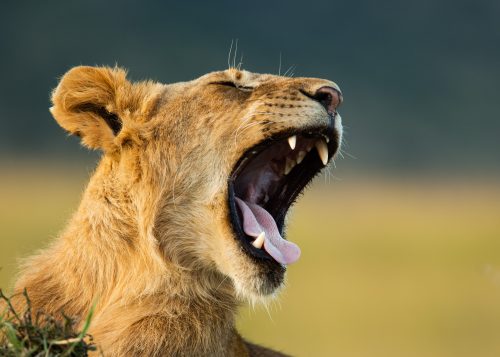As expected, it's not easy to catch and collar a bull elephant; it takes a lot of planning, and even then, nature can be unpredictable. In July this year, the Wildlife Research and Training Institute (WRTI), Kenya Wildlife Service (KWS) and Mara Elephant Project (MEP) set out to give Fitz a new solar-powered collar to ensure that they can keep track of him and encourage peaceful human-wildlife co-existence between him and his neighbours and their farms.
Fitz, named in memory of Steve Fitzgerald, roams the Nyakweri Forest along the escarpment behind Angama Mara, where deforestation has taken a heavy toll. Due to the diminishing available vegetation, he has developed a tendency to lead his herd out of the forest at night to crop-raid the neighbouring shambas.
Fitz was first collared in 2019 when the Angama Foundation sponsored a collar to keep his crop raiding under surveillance and protect him and his herd. It was time for a renewal this year with a new solar Savannah Tracking collar. A few Angama team members, including Angama Mara Head Guide Sammy Komu, joined the ‘Golf’ ranger team, permanently stationed in this area to protect Fitz and his herd and promote coexistence.
Although one might assume spotting a massive elephant would be straightforward, it took the team several hours to finally locate Fitz deep within the Nyakweri Forest. The helicopters were called in as the team was struggling to get him out of the thick bush, and they needed to isolate him from the herd so that he could be darted. Unfortunately, this was just the beginning of what would prove to be a very tricky situation.
Eventually, Fitz was isolated and moved into a small clearing, where he was successfully darted. However, the relief was short-lived. Once the dart started to take effect, the massive bull knocked down a beehive as he collapsed, bringing the bees’ wrath to the rangers and vet trying to collar him.
At first, everyone was determined to replace his collar, even covering themselves in blankets and jackets to prevent bees from stinging them. However, another issue is that elephants also hate bees. In fact, the MEP uses drones to move elephants, as the sound reminds them of bees and causes them to move away quickly.
In addition to being stung, the rangers were worried about Fitz. Eventually, they had to admit defeat to the fierce insects as the rangers managed to inject Fitz and wake him. The helicopter was called in to fly low overhead, hoping the rotors' wind would chase the bees away just enough for Fitz to get away undisturbed.
Luckily, everything was not lost. A few weeks later, with support from Kenyan Wildlife Service Vet Dr. Njoroge, the Mara Elephant Project’s determined ‘Golf’ ranger team made another attempt to re-collar Fitz — and was successful. He now sports a shiny new collar, and the team, supported by the Angama Foundation, continues its vital work to foster harmony between Mara’s elephants and the farming communities they share this landscape with.
A special mention must be made to the Mara Elephant Project rangers, who were determined to protect Fitz in the first attempt, ignoring their discomfort as bees continuously stung them. The Angama Foundation is proud to be working with the MEP and is grateful for all the work that goes into protecting Fitz and his herd.
Filed under: Stories From The Mara
Subscribe for Weekly Stories
Comments (0):

Angama Safari Offers